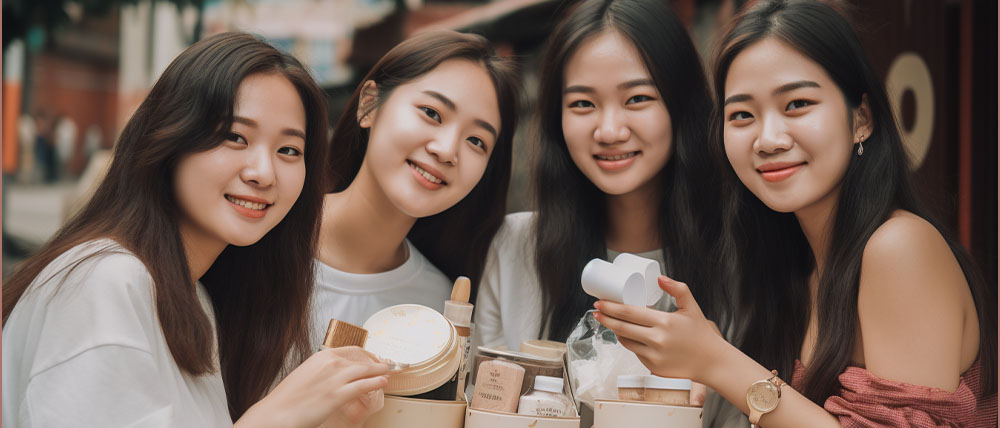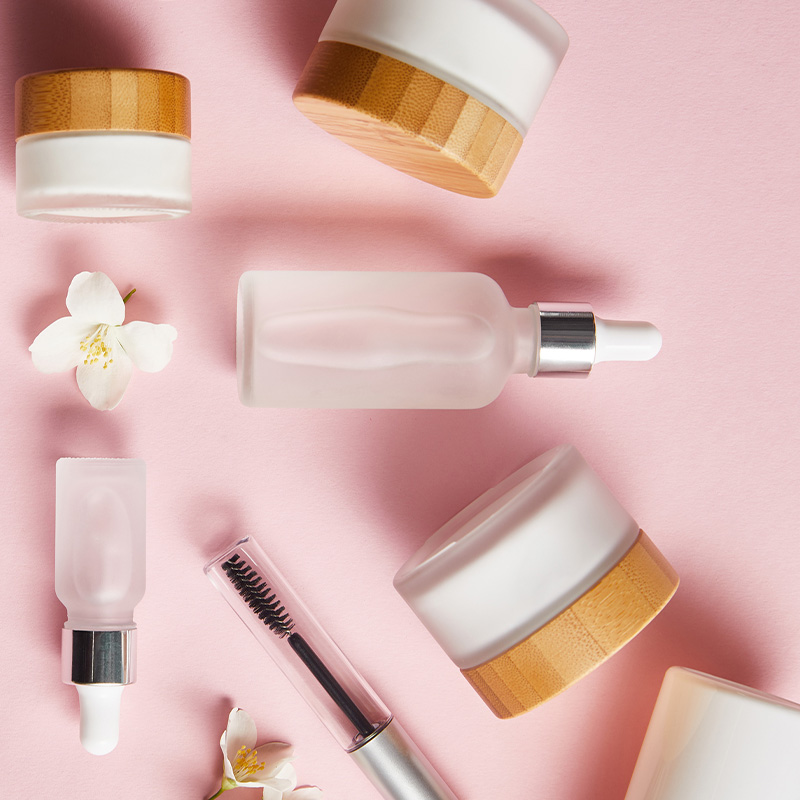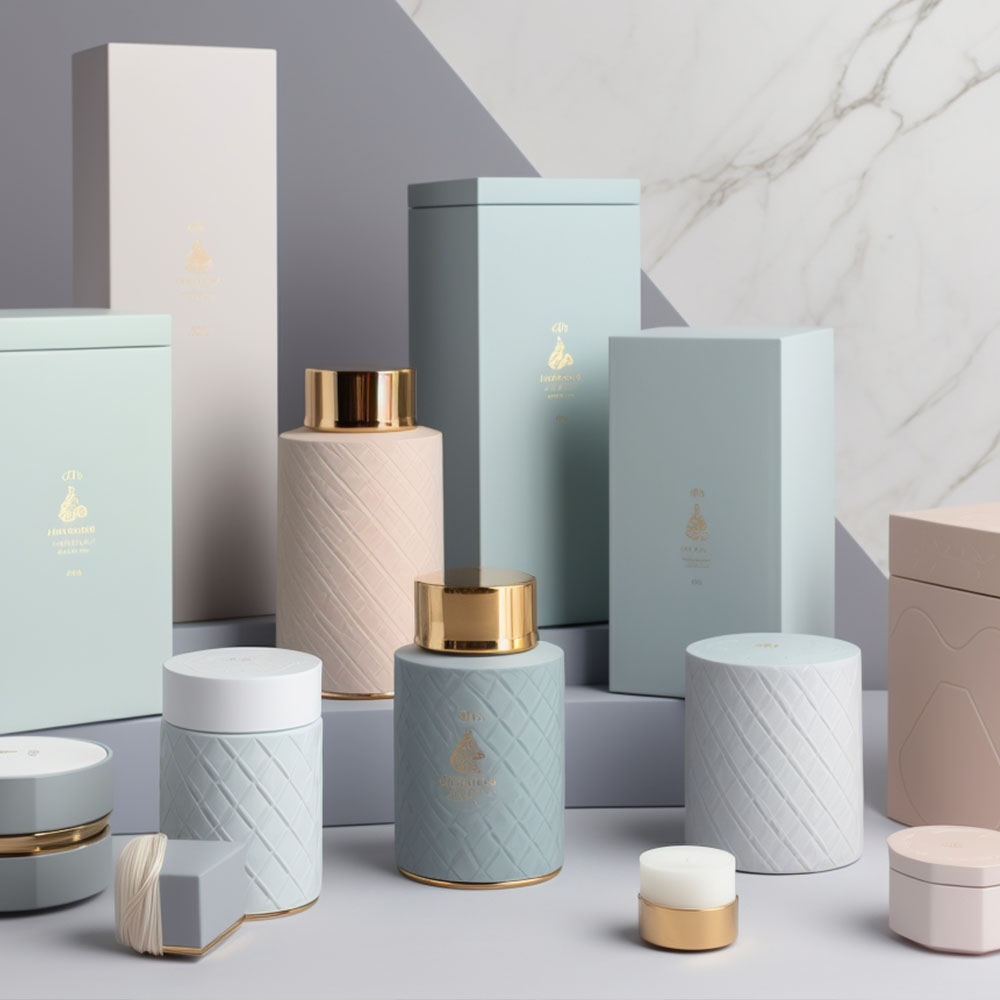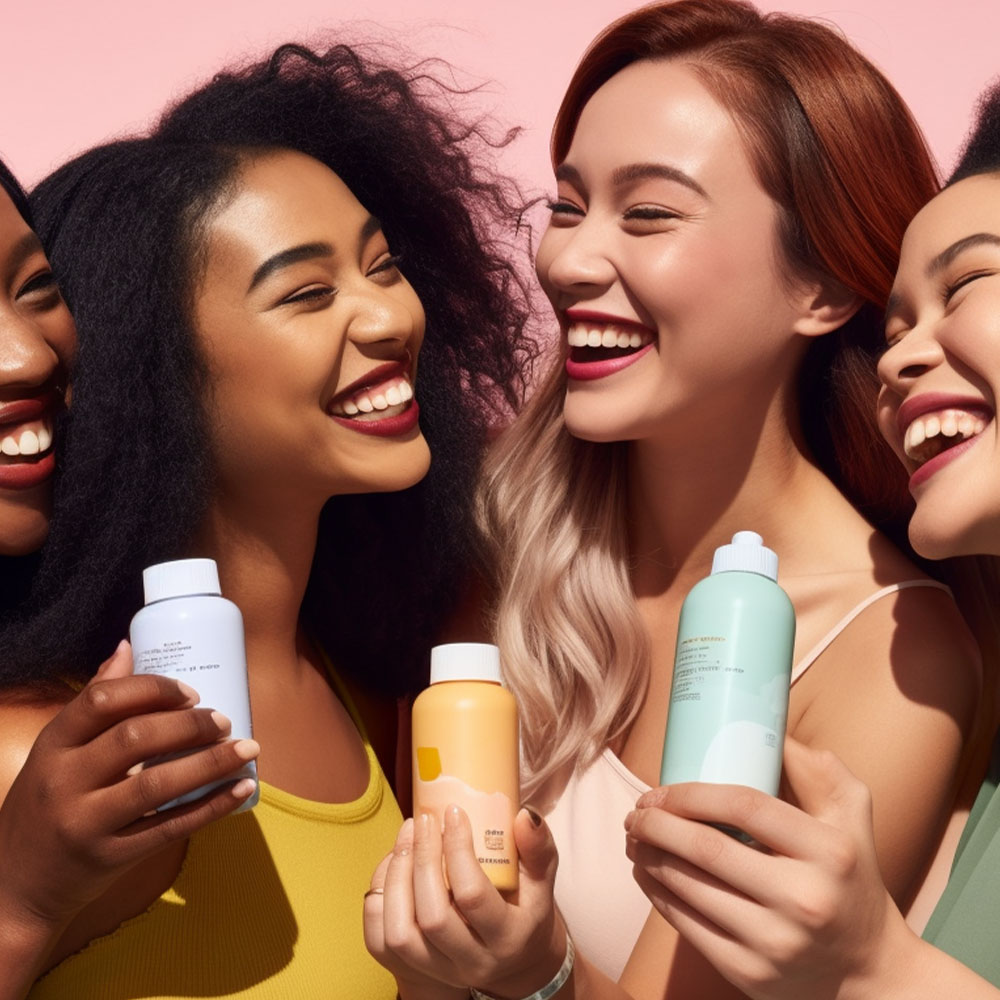
Numerous beauty brands struggle to make their mark on this lucrative landscape. With over 4 billion people and a rapidly growing middle class, the potential for success in the Asian beauty market is immense. However, breaking into this market requires more than just expanding your product offerings or lowering prices; it takes a comprehensive understanding of the cultural nuances, consumer behaviors, and marketing strategies that are unique to each country.
To succeed in the Asian beauty industry, you must be willing to invest time and resources into researching and adapting your brand to fit local preferences. This article will explore practical strategies for entering the Asian market, including identifying target demographics, tailoring products to meet specific needs, building strong relationships with retailers and distributors, utilizing social media influencers, and creating localized marketing campaigns. By following these tips and staying open-minded about new opportunities for innovation and growth, your beauty brand can effectively break into the fast-paced world of Asian commerce.
Understanding The Asian Beauty Market
Entering the Asian beauty market is like navigating a vast ocean with varying currents and unpredictable winds. To succeed, brands must understand the nuances of cross-cultural communication and consumer behavior analysis in this region.
One critical aspect is that Asians tend to have high expectations regarding skincare products. They prioritize quality over price and trust their peers’ recommendations more than any other source. As a result, brands must establish credibility by building relationships with key opinion leaders who can help them gain traction in the market.
Another critical point is that while some consumers might be drawn to Western-style packaging or marketing tactics, others may prefer more traditional or minimalistic approaches. Therefore, it must thoroughly research local preferences before launching its products.
Finally, language barriers can pose significant challenges when entering a new market. Even if English is widely spoken, cultural differences in phrasing and tone can impact how messages are received. Investing in effective translation services and leveraging local staff can help ensure successful communication with potential customers.
By understanding these factors and taking steps to address them, beauty brands can successfully navigate the complexities of the Asian beauty market and tap into its enormous potential.
Conducting Market Research in the Asian Beauty Market
To successfully break into the Asian market, conducting thorough market research is crucial. This involves surveying consumers and analyzing trends to understand their preferences and needs deeply. In addition, it is essential to note that what works in Western markets may not necessarily work in Asian markets, so it is essential to tailor strategies accordingly.
One effective way to conduct market research is through online surveys. By reaching out to target demographics and asking specific questions about their beauty routines and preferences, brands can gather valuable insights into product demand and potential gaps in the market. Tracking social media trends and influencers can provide invaluable information on popular products and emerging beauty categories.
Another strategy for analyzing trends is attending trade shows or events focusing on the beauty industry. These events offer opportunities for networking with key players in the market and observing new product launches and consumer behavior first-hand. Through this approach, brands can stay ahead of competitors while gaining insight into current preferences and shifts in the industry.
To ensure success in the Asian market, it’s also important to consider cultural differences when developing marketing strategies. For example, some cultures prioritize natural ingredients over synthetic ones or place higher importance on skin whitening products than tanning products. Awareness of these nuances allows brands to develop targeted messaging that resonates with local consumers.
Overall, conducting thorough market research is critical for any brand entering the competitive Asian beauty market. Surveying consumers and analyzing trends provides valuable insight into consumer preferences while staying up-to-date with industry developments ensures long-term success.
- Utilize online surveys to gather consumer insights
- Attend trade shows or events focused on the beauty industry
- Consider cultural differences when developing marketing strategies
- Stay up-to-date with social media trends and influencers – Invest in research and development to stay ahead of competitors and offer innovative products and services.
Identifying Target Demographics in the Asian Beauty Market
How can beauty brands genuinely understand the Asian market? How do we identify what makes this demographic tick and create products that cater to their needs? These questions are critical for any brand hoping to break into the region. The answer lies in conducting extensive research on cultural nuances and regional preferences.
Cultural nuances play a significant role in how different regions perceive beauty. For instance, Korean consumers prioritize skincare over makeup, while Japanese customers tend to value minimalism and simplicity. Not understanding these differences could lead to poor product performance or rejection by the target audience. Therefore, conducting thorough research before entering a new market and tailoring your marketing approach accordingly is essential.
Similarly, it’s crucial to consider regional preferences when developing new products or launching campaigns. While some trends may be widespread across Asia, each country has unique styles and tastes. As a result, brands must adjust their strategies based on local demands – creating culturally specific packaging or partnering with influencers with an established presence in the area.
Identifying target demographics is more than just numbers; it requires empathy and a deep understanding of consumer behavior. In today’s age of social media saturation, consumers crave authenticity and connection above all else. By learning about cultural nuances and regional preferences, brands can build meaningful relationships with Asian audiences beyond transactional exchanges.
Entering a new market can be daunting, but being aware of cultural nuances and respecting them will give you an edge against competitors who haven’t taken this extra step toward building strong customer relations. Understanding that every culture is unique should always be at the forefront of strategic planning if success is desired in foreign markets.
Tailoring Products To Meet Local Needs in the Asian Beauty Market
Product customization is critical to success in the Asian beauty market. First, it is necessary to understand that each country and region has unique cultural nuances affecting consumer preferences. Researching these local needs, including ingredients, packaging, and branding, can help create products tailored to specific markets.
One example of successful product customization is the Korean skincare brand Laneige’s Water Sleeping Mask. By incorporating traditional Korean ingredients such as birch sap and evening primrose extract into their formula, they could appeal to local consumers’ desires for natural remedies. The product was also packaged in a sleek blue jar with minimalist design elements, resonating with Koreans’ appreciation for understated elegance.
Another crucial aspect of product customization is understanding different skin types and concerns across various regions. For instance, Japanese customers often prioritize anti-aging solutions due to Japan’s aging population. Therefore, brands should consider developing targeted lines or promoting existing products that cater to these needs.
In summary, product customization based on cultural nuances is essential when attempting to break into the Asian beauty market successfully. By researching local needs and creating customized solutions, brands can establish themselves as relevant players in this highly competitive industry.
Building Strong Relationships With Retailers And Distributors
As the saying goes, “No man is an island.” The same holds for beauty brands looking to break into Asian markets. Building solid relationships with retailers and distributors is crucial in establishing a foothold in these markets. This involves finding the right partners and cultivating trust and communication.
To build these relationships, attending networking events is essential. These gatherings provide opportunities to meet potential partners face-to-face and establish connections that can lead to future collaborations. However, it’s essential to remember that language barriers may exist at these events. Therefore, bringing along a translator or learning some basic phrases in the local language can go a long way in making meaningful connections.
Once partnerships have been established, it’s essential to maintain open lines of communication with retailers and distributors. This means regularly touching base through phone calls or email updates on product offerings, promotions, and other relevant information. It’s also important to listen actively to feedback from partners, as this can help improve products and better serve customers’ needs.
In addition, building strong relationships with retail staff is just as critical as forming bonds with top-level decision-makers. Staff members act as brand ambassadors on the ground and play significant roles in influencing customer purchasing decisions. Providing training sessions for sales associates about your brand’s unique selling points can increase their knowledge of your products and enhance their ability to sell them effectively.
Markdown list:
- Attend networking events
- Bring a translator if necessary
- Maintain regular communication with partners
- Provide training sessions for retail staff
In summary, breaking into Asian markets requires more than just good products; it requires building strong relationships with key players in the industry. By attending networking events, overcoming language barriers when needed, maintaining open communication channels, and providing training sessions for retail staff – businesses can set themselves up for success in these highly competitive markets without neglecting innovation or creativity.
Utilizing Social Media Influencers
Utilizing Social Media Influencers can be a game-changer for any beauty brand seeking to enter the Asian market. In this region, social media is king, and consumers highly regard influencers. Therefore, partnerships can help brands reach their target audience more effectively and efficiently than traditional advertising methods.
However, selecting the right influencers that align with your brand values and resonate with your target audience is crucial. Cultural nuances significantly influence purchasing decisions in Asia, so working with local influencers who understand these nuances intimately is essential. Additionally, measuring ROI is crucial when working with influencers. Establishing clear objectives before partnering with an influencer helps measure success accurately.
When selecting influencers, consider factors such as engagement rates, demographics of their followers, content quality, and authenticity. Authenticity is essential in Asia, where fake reviews or paid promotions could harm the credibility of the influencer and the partnered brand. A successful partnership should be mutually beneficial – providing value to both parties while remaining authentic.
Influencer marketing has become an indispensable tool for beauty brands looking to establish themselves in the Asian market successfully. However, finding the right partners requires careful consideration of cultural differences and strategic planning. By leveraging social media influencers effectively and efficiently through thoughtful selection processes and accurate measurement tools, beauty brands stand poised for long-term growth in this dynamic marketplace without compromising authenticity or credibility.
Creating Localized Marketing Campaigns
Unlocking the potential of an untapped market can be likened to cracking open a treasure chest. Immeasurable riches are waiting to be discovered; it takes the right strategy to unlock them. Creating localized marketing campaigns is one such approach that has proven adequate repeatedly.
Collaborating with influencers who have established themselves in the Asian market is an excellent way to build brand awareness quickly. These individuals already have a following that trusts their opinions, so partnering with them instantly gives your brand credibility in a new territory. However, it’s essential to choose influencers whose values align with those of your brand, as cultural sensitivity in marketing cannot be overemphasized.
When creating localized marketing campaigns for Asia, it’s vital to consider cultural differences and tailor communication accordingly. This means using appropriate language, imagery, and tone when interacting with consumers. Failing to do this could lead to misunderstandings or even offend some people – something you want to avoid at all costs.
In summary, tapping into the Asian beauty market requires careful planning and execution on several fronts. Collaborating with influential figures can help establish trust faster while being culturally sensitive in marketing avoids any miscommunication issues down the line. With these strategies, brands stand a better chance of unlocking the wealth hidden within this exciting market opportunity.
Choosing The Right Distribution Channels
When breaking into the Asian market, choosing the proper distribution channels is crucial. Brands must decide between online and offline distribution, or a combination of both, based on their target audience and local regulations.
Online distribution can be an effective way for beauty brands to reach consumers in Asia quickly and efficiently. E-commerce platforms like Alibaba’s Tmall and JD.com are popular among Chinese shoppers, while South Korean consumers prefer social media-driven shopping experiences such as Instagram and Facebook. However, brands must also consider the challenges of e-commerce, such as fake products and delivery issues.
On the other hand, offline distribution through brick-and-mortar stores remains essential in many parts of Asia, where physical retail spaces still dominate. For example, Japanese consumers rely heavily on drugstores for their cosmetics needs. Therefore, we need to understand these consumer behaviors and partner with reputable retailers that align with their brand image.
Navigating local regulations is another critical consideration when deciding on distribution channels in Asia. Regulations governing imports vary by country, making navigating them challenging; however, working with experienced partners who know regulatory requirements can help ease this process.
| Online Distribution | Offline Distribution |
|---|---|
| Fast and efficient | Physical retail spaces remain dominant |
| Challenges such as fake products and delivery issues | Understanding consumer behavior is crucial |
| Popular among Chinese shoppers: Alibaba’s Tmall & JD.com | Partnering with reputable retailers can enhance brand image |
| Social media-driven shopping experiences preferred by South Koreans: Instagram & Facebook | Essential to navigate import regulations |
In summary, selecting the most appropriate distribution channel(s) requires careful thought and planning for beauty brands looking to break into the Asian market. The decision will ultimately depend on several factors, including product type, target audience demographics, regional preferences, cultural nuances, government regulations, etc. Identifying these factors early in the market entry strategy development phase – determining whether online vs. offline distribution is best suited for a given brand will be much easier. Once decided, the next step would be to partner with reputable retailers and distributors who can help navigate local regulations to ensure that products comply with all necessary import requirements without significant issues or delays.
Overcoming Cultural And Regulatory Barriers
Navigating trade restrictions can be tricky, but it’s doable. I always suggest understanding the local regulations and trade policies before entering the market. Understanding cultural norms is critical, too. It’s essential to know how people in the area prefer to buy and use products and their values. Lastly, adapting products to local demand is critical. It’s important to consider packaging and ingredients that resonate with the local culture. Doing all this will help ensure a successful entry into the Asian market.
Navigating Trade Restrictions
Navigating trade restrictions can be daunting yet exciting. To succeed in breaking into the Asian market, beauty brands must understand and comply with various regulations different from those in their home countries. This entails sourcing alternatives to prohibited ingredients and ensuring legal compliance.
One strategy is to find natural and organic ingredients locally sourced or grown in Asia. Many countries in the region have a wealth of resources, such as botanicals, herbs, and fruits that can be used as substitutes for synthetic chemicals. Brands should also consider partnering with local suppliers who have already established relationships with regulatory authorities and know how to navigate legal requirements.
Legal compliance is crucial when entering new markets. Beauty brands must ensure their products meet all necessary safety standards and obtain the appropriate certifications before launching them in Asia. Failure to do so could result in fines or even being banned from selling products altogether. Therefore, working closely with legal experts specializing in cosmetics regulations specific to each country is essential.
In conclusion, breaking into the Asian market requires careful consideration of sourcing alternatives and complying with various regulations unique to each country. However, by finding natural ingredients sourced locally within Asia and working closely with legal experts, beauty brands can overcome regulatory barriers and establish themselves successfully in this burgeoning market of innovation-hungry consumers.
Understanding Cultural Norms
Now that we have discussed the importance of complying with regulatory requirements let’s move on to another critical aspect of breaking into the Asian market: understanding cultural norms. Beauty brands must be culturally sensitive and aware of local customs when launching products in Asia. Failure to do so could result in adverse consumer reactions, damaging brand reputation and hindering success.
One way to overcome cultural barriers is by localizing branding efforts. This means adapting marketing strategies and product packaging to fit the preferences and tastes of each country or region within Asia. For example, some countries prefer minimalist designs, while others favor bright colors and bold graphics. Understanding these nuances can help brands establish a stronger connection with their target audience and increase sales.
Cultural sensitivity also extends beyond aesthetics; it encompasses everything from language usage to social etiquette. Brands must ensure that all communication materials are translated accurately and appropriately for each market they enter. Additionally, promotional events should reflect local traditions and values instead of imposing Western-centric concepts onto Asian cultures.
In conclusion, overcoming cultural barriers is essential for beauty brands looking to succeed in the Asian market. By incorporating localized branding strategies and being culturally sensitive throughout all business operations, companies can build trust with customers and establish themselves as innovative leaders in the industry.
Adapting Products To Local Demand
We have already discussed the importance of complying with regulatory requirements and being culturally sensitive throughout all business operations. Now, let us delve into another crucial aspect: adapting products to local demand.
Product localization is a vital component of success in the Asian market. Brands must understand that what works in one country may not necessarily work in another due to differing preferences and tastes. By tailoring product features such as color palettes, scents, and formulations to fit each region’s unique demands, companies can gain a competitive advantage over those who fail to do so.
Cultural adaptation plays a significant role in this process as well. For example, some countries prefer natural and organic ingredients, while others prioritize high-tech innovations. Beauty brands need to consider these nuances when developing new products or modifying existing ones for specific markets within Asia.
By prioritizing product localization and cultural adaptation, beauty brands can establish themselves as innovative leaders in the industry. ByByIn addition, by understanding their target audience’s needs and desires, companies can create more personalized experiences that resonate with consumers on a deeper level. Ultimately, this will lead to increased sales and brand loyalty among customers.
In conclusion, breaking into the Asian market requires overcoming cultural and regulatory barriers. Adapting products to local demand through product localization and cultural adaptation is essential for success in this highly diverse region. We encourage beauty brands to embrace innovation by taking these steps toward establishing themselves as trusted leaders in the industry.
Measuring Success And Adapting To Changes
Overcoming cultural and regulatory barriers can be daunting for beauty brands looking to break into the Asian market. It requires careful analysis of local customs, traditions, and laws that may not align with those in the brand’s home country. However, this is only the first step towards success.
Once a brand has established itself in the market, it must analyze metrics to measure its progress accurately. This involves tracking sales figures, customer feedback, and social media engagement to gain insights into what works and what doesn’t. By doing so, brands can identify areas where they need to improve their product offerings or marketing strategies.
Flexibility in strategy is also crucial when entering new markets. Brands must be willing to adapt quickly to changes in consumer behavior or government regulations while staying true to their core values. For example, during COVID-19 lockdowns in Asia, e-commerce became even more critical; hence beauty brands needed to pivot from traditional brick-and-mortar stores by prioritizing online shopping experiences.
In conclusion, breaking into the Asian market requires overcoming cultural and regulatory barriers and adapting your plan based on metrics analysis and flexibility in your approach. As an entry strategist for beauty brands seeking success in Asia’s vast marketplace, you must always stay one step ahead of changing trends while never losing sight of your brand’s unique identity. With these techniques, you will have everything you need to succeed!
Conclusion
Well, well, well, it seems you’ve made it to the end of my little guide on breaking into the Asian beauty market. Congratulations! But let me tell you something, dear reader; this is just the beginning.
As an entry strategist, I know that conquering a new market takes more than just following some steps from a fancy article. It takes time, effort, and, most importantly, adaptability. So don’t be fooled by thinking that simply tailoring your products and creating localized marketing campaigns will guarantee success. Instead, keep learning about the local culture and trends because, as we all know – change is the only constant in life (and business).









